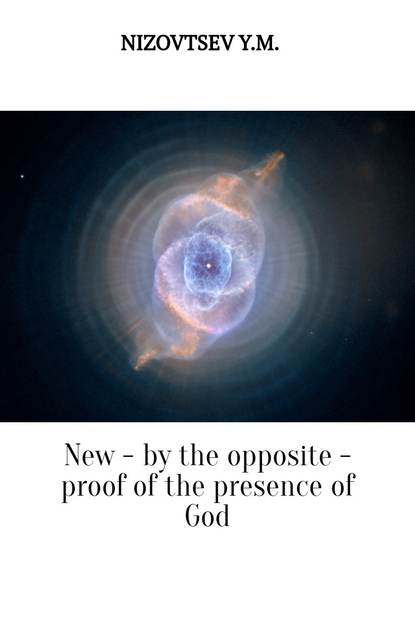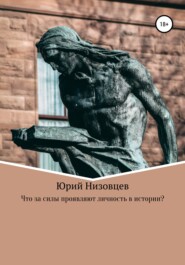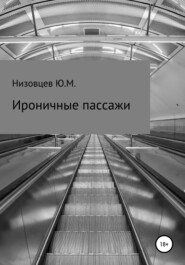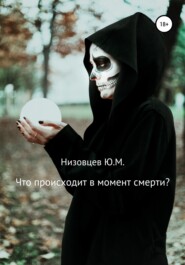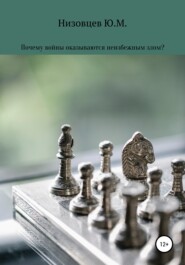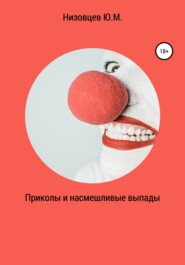По всем вопросам обращайтесь на: info@litportal.ru
(©) 2003-2024.
✖
New – by the opposite – proof of the presence of God
Настройки чтения
Размер шрифта
Высота строк
Поля
Exactly the holographic nature in the basis of living beings allows them to be separate, living every time by own life, having own time, own beingness, and along with that in the set – to be the single being who is eternal both in its singularity, and in each its separateness.
At this, life of a body of the living being comes to the end when the passive component of each living being loses the form, which provides the vital functions of a body unlike the active component of the living being which is capable to keep the own form (individuality), resulting the eternal individual consciousness should "shift" self into a new bodily form after each collapse of the passive components of the body.
Coincidence of everyone separate active in the living being with single active (single consciousness) in the hologram means their indissoluble communication and in beingness. In particular, for this reason single consciousness provides automatic functioning of an organism of each living being.
It must be assumed that the specified analogy will bring bigger understanding offered by us of the model of Creation and a way of functioning of Creation, as well as won't allow to equate this model to solipsism.
Confirmation of the fact of impossibility of self-generation of alive organisms on Earth is that relatively recently were found traces of organisms, at which could not but be a genome, in the most ancient on the Earth sedimentary rocks in the southwestern part of Greenland: it was traces of complex cellular structures whose age is at least 3.86 billion years.
So, most likely, the first forms of life could have arisen as a result of hitting to Earth with meteorites [5].
In other words, how many Creation exists, so much and life exist in development – from bacteria to mammals
As for a genome, then it is based on the program, copied by the active in a projection from Uniform on the molecular chains of a genome in accordance with the form-building abilities, which are available for it, for each case.
1.6. Manifestation of consciousness at the level of alive.
So what characterizes all living beings, including the person, and distinguishes from other things if to exclude thinking?
Certainly, it is sensations, without which there is no only food for thought, but also there is no life. Therefore, it is possible to tell: "It is feeling, means it lives". The reality shows, that this thesis is true: try to swat a cockroach or to catch a small fish by a hand; and they and all other living beings will evade in every way from death, i.e. any living being doesn't want to lose sensations at all, or the existence in life, though it doesn't understand that means not to live.
Hobbes formulated idea of domination of sensations as the basis for human mind as follows: “… for there is no conception in a man's mind, which hath not at first, totally, by part, been begotten upon the organs of sense” [4, p. 1]. In a certain degree here he hinted that a truth source, as such, is sensations, that is adequate to a situation.
Locke developed Hobbes's thought about sensations, making a source of ideas, having designated their origin from sensations as well as mind, and having introduced experience as criterion of truth of the knowledge, gained from these sources: “All ideas come from sensation or reflection… all that our knowledge is founded, and from that it (experience) ultimately derives itself… The objects of sensation one source of ideas. – First, Our senses, coversant about particular sensible objects, do convey into the mind several distinct perceptions of things, according to those various ways wherein those objects do affect them… The operations of our minds the other source of them. Secondly, The other fountain, from which experience furnisheth the understanding with ideas, is the perception of the operations of our own mind within us, as it is employed about the ideas it has got; which operations, when the soul comes to reflect on and consider, do furnish the understanding with another set of ideas, which could not be had from things without; and such are Perception, Thinking, Doubting, Believing, Reasoning, Knowledge, Willing, and the different actings of our own mind…” [7, p. 77].
Locke's removal from prime beginning – sensations, couldn't but lead him to thought of check of the different ideas, arising on the basis of sensations. As criterion of truth for correction of distortions, arising in the course of formation of ideas, Locke offers experience. In this approach of Locke to definition of truth is looked through the understanding of the fact that progress towards truth is an aspiration to explain the nature of objects and phenomena. This means understanding of the impossibility of possessing by the person of absolute truth.
On the other hand, the experimental verification of the ideas proposed by Locke is the rejection of the concept of "innate ideas": “… men, barely by the use of their natural faculties, main attain to all the knowledge they have, without the help of only of any innate impressions; and may arrive at certainly, without any such original notions or principles” [7, p. 7].
In this opinion Locke both is right, and isn't right, inasmuch the crux of the matter consists in – to whom should be attributed these form-building abilities or ideas.
In human consciousness these form-building abilities or ideas are hidden, more precisely, directly they can't be manifested, so how the person is obliged to start acting in life with "blank sheet", to find new ways, but not to be under the influence of already known. Along with that, "congenital ideas", and actually form-building abilities of single consciousness, are a basis of all real, inasmuch the lifeless matter can't produce any ideas, unlike consciousness. Therefore, single consciousness, which is present at each person, forms all environment, surrounding him, through his sensations on the basis of the passive from Uniform.
Single consciousness in a varying degree understands itself and understands that it wants and can, and, as a result, it finds ways of own development both on own level, and on the level of each individual consciousness in the environment which except it couldn't be formed on own projects.
Our reasoning and digression to history lead to thought, that there are two levels of consciousness – the lowest, which includes all the living, self-perpetuating, adapting to the environment, changing in it, acting instinctively and reflexively, perceiving the fact of own existence at the level of sensations; and the highest level of consciousness which differs from the lowest only by the fact that to the perception of sensation is added the awareness of self, expressed not only in thinking, the speech, but also in imagination, memory, different experiences and passions, will, perpetual aspiration to liberty against any order.
Any consciousness, and not just human consciousness, produces own world, copying and receiving every moment via channels of the sense organs which are available for own carrier, of course, not a direct image of all Uniform, which is the infinite, but, receiving display of those fragments from Uniform which this individual consciousness is capable to identify and bind with the hidden help of single consciousness.
All this initial copying of the recognizable fragments from Uniform any individual consciousness carries out automatically as it can, according to own level of development, own sense organs, but in contact with single consciousness, inasmuch individual consciousness in the carrier, whether it be a bacterium or the person, in a separation from single consciousness can't deploy a full picture of own world in the present, formed by it, and it also doesn't exist in a separation from single consciousness, making in the holographic projection not its part, but being by single consciousness self.
The living beings without self-consciousness are completely subordinated to the need in the world which is manifested through their sense organs without realizing itself.
However, the living beings without self-consciousness potentially comprise the germ of liberty so how they at own level through own sense organs by means of single consciousness forms own time of life, own environment and seeks to survive in it.
But the living beings without self-consciousness do not yet have the opportunity to be aware of itself in this world, unlike the beings understanding self. Nevertheless, any "simple" living being differs from a thing, inasmuch it senses and has the master intellect according to which it can adequately act in the world of the phenomena, without going deep into their essence. Thereby any "simple" living being is a threshold of the highest consciousness, without which the last isn't capable to manifest, inasmuch only the living being has sense organs, and without sensations and the person and any other organism, understanding itself, can't "enter" into existence into the real, moving world.
As a rule, self-consciousness is manifested in the living beings without self-consciousness on the highest level of their developments. These beings are used by the highest consciousness which is taking root into them as a basis for development of the got formation. Therefore, single consciousness primarily copies itself in the form of the living beings without self-consciousness in the "external" world formed by him as uniform consciousness providing the living beings suitable conditions for gradual development, which is expressed in creation by each living organism of his "now" within "the external". Actually, development of the living organism consists in reworking by its consciousness of the reality formed by it as being updated "now", in every moment which consciousness through sensations "replaces" gradually and consistently copies of previous objects of environment on objects, which provide to it the best adaptability by environment and the most favorable living conditions.
Thereby any living being changes self, fighting against other types of the living beings, perishing and appearing in new quality, but in general the living beings is in a progressive trend. All this is satisfactorily studied and described by the evolutionary theory, except an explanation of emergence the living beings and emergence among living beings of the person who, having self-consciousness, refuses simply to adapt to the environment, but begins to change it purposefully.
As a result, the volume of information received by each person and human communities in general grows with big acceleration, than for the living beings without self-consciousness, more and more condensing time and eventually leading of human communities in our three-dimensional measurement to disintegration owing to the information collapse, or accumulation of excess information which consciousness of the person is not able to "digest" [8, chapter V].
Thus, the being with self-consciousness differs from other living beings only by understanding ourselves, from which grows all its aspirations, and which are based on dissatisfaction of consciousness by itself, meaning its initial activity which is expressed in impossibility of this being to live, simply adapting to the environment. It acquires requirement to change this environment and to change itself together with it, and thus to develop, not following the only need to adapt to the existing order.
This conscious aspiration to change all existing, to liberation from former, to its replacement by other is the finding of liberty by any being with self-consciousness. Liberty of any individual consciousness is anyway manifested in these conscious decisions. During this process the consciousness enriches itself. At the same time liberty gives to the person the chance to live as he wants within surrounding reality if the person, the consciousness carrier, is able, more precisely, is capable to dispose by this gift adequately.
Liberty does not require "to attribute" it to the person as "transcendental object" ("thing-in-itself"), i.e. to believe that the person is free only in the intelligible world. Any self-conscious being is freely always and everywhere owing to understanding of itself, understanding of own existence in the world: it always comes to decisions self, it self and is responsible for them in any sphere – practical or intellectual. And it is unimportant, are available on it the reasons or these decisions are spontaneous; the important thing is that in the consciousness of the person as the exponent of activity of consciousness "sits" perpetual dissatisfaction, without which he would turn into the stupid cattle, chewing the same cud, that can be very pleasant. Exactly it is the expression of his liberty and for this reason he has an opportunity not simply to live, and consciously to develop himself and don't stand still [9, chapters I-II]/
Not beingness "imposes" self to consciousness in general, and not consciousness can do what it wishes with beingness, but consciousness "attracts" to itself copies only of those objects from Uniform which it is capable to identify and unite through sensations of the carrier of consciousness with that from moment to moment by consciousness for itself eventually is being formed a changing picture of things. Images of things in consciousness at this process are adequate to the things. Other fragments from Uniform, which can't pass across the available canals of sense organs or which consciousness aren't capable to distinguish, at least, so far, drop out of the changing picture of the fragmentary beingness formed by consciousness.
Вы ознакомились с фрагментом книги.
Приобретайте полный текст книги у нашего партнера:
Приобретайте полный текст книги у нашего партнера:





